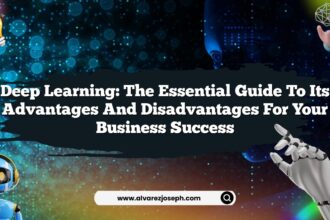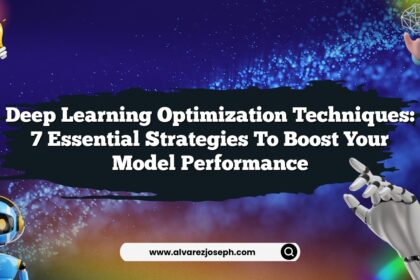Deep learning frameworks are the backbone of modern AI applications, enabling everything from image recognition to natural language processing. As we step into 2024, the landscape of deep learning frameworks is more vibrant and diverse than ever. This article is your ultimate guide to understanding and choosing the best deep learning frameworks that can help you unlock your AI potential today!
Imagine waking up one day, and instead of scrolling through mundane social media feeds, you could create your own AI model that predicts trends, automates tasks, or even writes poetry! Sounds dreamy, right? Well, that dream is within reach thanks to the incredible advancements in deep learning frameworks. But which one should you choose? Let’s dive right into this exciting world!
Exploring the Best Deep Learning Frameworks of 2024
In the vast sea of deep learning frameworks, a few stand out like the North Star. Each offers unique features, performance capabilities, and community support that can make or break your AI project. Here’s a look at the rock stars of deep learning in 2024:
1. TensorFlow: The Industry Giant
TensorFlow, developed by Google, remains a top choice for developers and researchers alike. Its flexibility, scalability, and comprehensive ecosystem make it perfect for both beginners and experienced practitioners.
- Strengths:
- Wide Adoption: Used by numerous companies and researchers.
- Rich Ecosystem: Offers tools like TensorBoard for visualization and TensorFlow Lite for mobile deployment.
- Community Support: A large community means finding solutions to problems is relatively easy.
But is TensorFlow perfect? Not quite. Its complexity can overwhelm newcomers, and sometimes, the performance doesn’t match smaller frameworks in specific tasks.
2. PyTorch: The Research Favorite
If you’re looking for a framework that feels intuitive and is widely embraced in academia, PyTorch is your go-to. Created by Facebook, it has simplified the process of building and training neural networks.
- Strengths:
- Dynamic Computation Graphs: Allows for more flexibility during model building.
- Easy Debugging: The use of Python makes it easier to debug code compared to static frameworks.
- Growing Adoption in Industry: While traditionally a research tool, its popularity is growing among developers.
However, PyTorch’s deployment features were initially less robust than TensorFlow’s, though improvements are consistently being made.
3. Keras: The User-Friendly Option
Keras, which runs on top of TensorFlow, is designed for ease of use. It’s the perfect framework for beginners who want to get models up and running with minimal fuss.
- Strengths:
- Simplicity: User-friendly API, enabling quick prototyping.
- Modular: Easy to create complex models with a few lines of code.
- Integration with TensorFlow: Access to TensorFlow’s powerful features while enjoying Keras’s simplicity.
While Keras is fantastic for quick experiments, it might not provide the depth required for very complex models.
4. MXNet: The Fast and Scalable Framework
Backed by AWS, MXNet is tailor-made for speed and efficiency. It’s especially useful for models that need to be deployed at scale.
- Strengths:
- Scalability: Excellent for distributed computing.
- Performance: Optimized for both CPUs and GPUs.
- Support for Multiple Languages: Unlike most frameworks, it allows development in languages like R and Scala.
But be aware! MXNet’s relatively smaller community might make finding resources a little tricky.
5. JAX: The New Kid on the Block
JAX is the brainchild of Google and is gaining traction for its unique approach to automatic differentiation. If you’re looking for cutting-edge research tools, JAX might be the right choice.
- Strengths:
- Performance: Uses XLA (Accelerated Linear Algebra) to optimize computations.
- Automatic Differentiation: Makes gradient calculations straightforward.
- Research-Oriented: Ideal for complex mathematical functions and models.
However, the steep learning curve might deter those who are just starting out in AI.
6. Fastai: Unlocking Deep Learning for All
Fastai is built on top of PyTorch and aims to make deep learning accessible for everyone, regardless of experience level. With a focus on practical applications, it’s perfect for educators and hobbyists.
- Strengths:
- High-Level Functions: Simplifies common tasks, making it easier to get started.
- Community-Driven: Active forums and resources for learners.
- Free Courses: Offers educational content to help you learn as you code.
But while it’s excellent for beginners, the abstraction might hinder advanced users who want more control.
Choosing the Right Deep Learning Framework for You
So how do you decide which framework is best for your needs? Let’s break it down into a few key considerations:
Define Your Goals
Are you focusing on research or production? If research is your priority, PyTorch and JAX might be your best bets due to their flexibility. If you’re looking to deploy applications, TensorFlow or MXNet could serve you better.
Ease of Use vs. Control
Do you prefer simplicity or intricate control? Frameworks like Keras and Fastai offer user-friendly experiences, while TensorFlow and PyTorch grant more control at the cost of complexity.
Community and Resources
A strong community can be a lifesaver. Check forums, documentation, and available tutorials. TensorFlow and PyTorch boast vast communities, making it easier to troubleshoot.
Performance Needs
Consider your project requirements. If you need to scale your models efficiently, MXNet is designed for high performance. For heavy computational tasks, JAX shines.
The Future of Deep Learning Frameworks
As we look ahead, the deep learning landscape will undoubtedly evolve. Innovations like federated learning and unsupervised learning are gaining traction, and frameworks will adapt accordingly. Moreover, the integration of deep learning with other fields like quantum computing promises exciting developments.
What’s Trending?
- Federated Learning: Enhancing privacy while training models on user data.
- AutoML: Automating the process of model selection and hyperparameter tuning.
- Explainable AI (XAI): Making AI decisions more understandable and transparent.
But this isn’t where the story ends. The world of AI is like a rollercoaster—full of twists, turns, and surprises!
Quick Summary
- TensorFlow is great for scalability and has a rich ecosystem.
- PyTorch is favored in research for its ease of use and dynamic graphs.
- Keras simplifies model building, making it perfect for beginners.
- MXNet offers excellent scalability and performance for distributed systems.
- JAX is for researchers wanting cutting-edge tools and optimizations.
- Fastai opens the door to deep learning for newcomers with its high-level functions.
- Determine your goals before choosing a framework.
- Community support can help you overcome hurdles.
- Performance needs should guide your framework choice.
- The future of deep learning frameworks is exciting, with trends like federated learning on the rise.
Frequently Asked Questions
What is the best deep learning framework for beginners?
Keras is often recommended for beginners due to its simplicity and ease of use.
Can I use multiple frameworks for the same project?
Absolutely! Many developers leverage different frameworks for various components of a project.
Are deep learning frameworks free to use?
Most frameworks like TensorFlow, PyTorch, and Keras are open-source and free to use.
How important is community support for a deep learning framework?
Community support is crucial as it provides resources, troubleshooting help, and shared knowledge.
Which framework is best for mobile app development?
TensorFlow Lite is specifically designed for deploying models on mobile devices.
Is TensorFlow still relevant in 2024?
Yes, TensorFlow remains a leading framework due to its comprehensive tools and industry adoption.
In this whirlwind tour of deep learning frameworks, we’ve explored the giants, the newbies, and everything in between. Your journey into AI can be thrilling, rewarding, and yes—often perplexing. But remember, it all depends on what you’re looking for. Happy coding!












